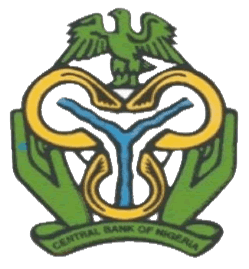Please use this identifier to cite or link to this item:
https://library.cbn.gov.ng:8443/jspui/handle/123456789/94Full metadata record
| DC Field | Value | Language |
|---|---|---|
| dc.contributor.author | Golit, P. D. | - |
| dc.date.accessioned | 2018-03-19T13:14:03Z | - |
| dc.date.available | 2018-03-19T13:14:03Z | - |
| dc.date.issued | 2013-06 | - |
| dc.identifier.citation | Golit, P. D. (2013). Structural Change and Real Output Growth in Nigeria: a cointegration analysis. Economic and Financial Review, 51(2), 21–61. | en_US |
| dc.identifier.issn | 1957-2968 | - |
| dc.identifier.uri | http://library.cbn.gov.ng:8092/jspui/handle/123456789/94 | - |
| dc.description.abstract | The study employed the Johansen (1988) and the Johansen and Juselius (1990) multivariate maximum likelihood method within a Vector Autoregressive framework to explore the impact of structural reforms on the level of real output in Nigeria. We fit the equation separately for two sub-samples, the pre-reform and the market-reform periods, to enable comparisons of the outcomes under alternative policy regimes. We further estimate the model using data that covered the entire sample period to evaluate the total effects and include a dummy variable to capture the impact of the policy shift. The Johansen cointegration test confirms the existence of long-run equilibrium relationships among the variables. Various diagnostic tests conducted confirmed the robustness of the results. The Chow Breakpoint test rejected the null hypothesis, which states that the real output function remained the same before and after structural reforms. The results of our parsimonious models suggest that real exchange rate, real credit to the private sector and the previous level of real output are the most consistent drivers of real income in Nigeria. The long-run Granger causality test supports that the above variables could help predict the future level of real output. Since it is evident that the price system cannot guarantee the desired moderation in interest rates, the monetary authorities need to take extra measures to reduce interest rates in different segments of the market. Government can also play complementary roles by limiting the size of budget deficits to cut down on huge domestic borrowing, which now runs into trillions of naira. This will not only improve investment but will go a long way to free additional credit for onward lending to the private sector. The present stability in the foreign exchange market also needs be sustained to forestall any further depreciation in the exchange rate. Above all, more stable sources of foreign exchange need to be urgently sought if the monetary authorities are to meet the ever increasing demand for foreign exchange to stabilise rates in the market. | en_US |
| dc.description.sponsorship | Central Bank of Nigeria | en_US |
| dc.language.iso | en | en_US |
| dc.publisher | Research Department, Central Bank of Nigeria. | en_US |
| dc.relation.ispartofseries | Economic and Financial Review;Vol. 51 No. 2 | - |
| dc.subject | Structural reforms | en_US |
| dc.subject | Real output | en_US |
| dc.subject | Error-Correction model | en_US |
| dc.subject | Cointegration | en_US |
| dc.title | Structural Change and Real Output Growth in Nigeria: a cointegration analysis. | en_US |
| dc.type | Article | en_US |
| Appears in Collections: | Economic and Financial Review | |
Files in This Item:
| File | Description | Size | Format | |
|---|---|---|---|---|
| CBN Eco. & Fin. review Vol. 51 No. 2 Article 2.pdf | 350.08 kB | Adobe PDF |  View/Open |
Items in DSpace are protected by copyright, with all rights reserved, unless otherwise indicated.
Admin Tools
